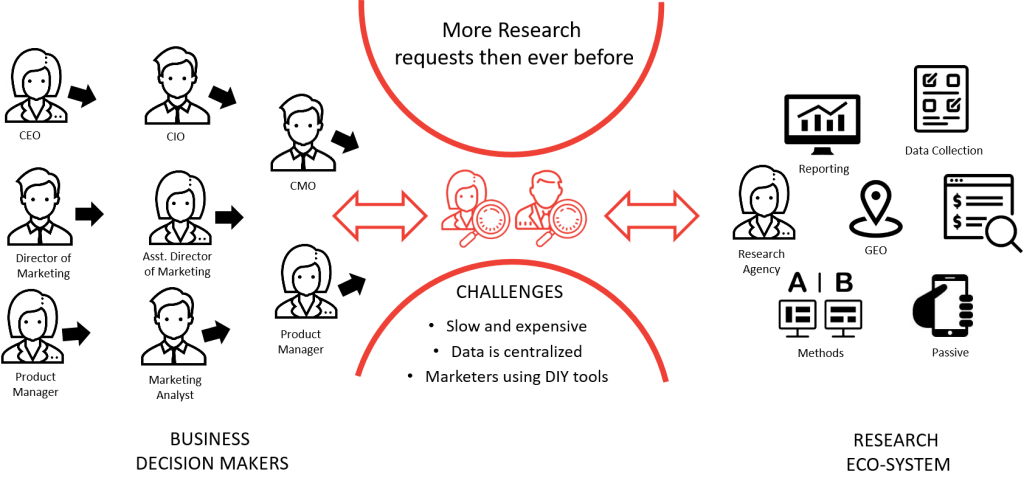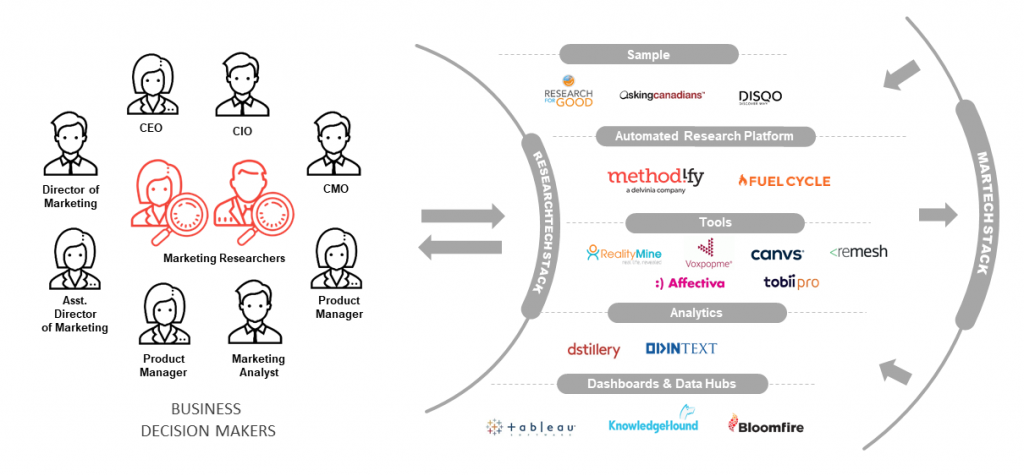Originally published on the Association of Canadian Advertisers blog.
In 2020, finding a marketer who isn’t using some form of Marketing Technology (MarTech) stack would be nearly impossible. In fact, chiefmartec.com says that in 2011 there were about 150 marketing solutions – today they are tracking over 7,000 technology solutions. These martech solutions support all aspects of marketing functions, from content development to marketing automation and, of course, consumer data, insight and analytics tools.
It is this research function where martech has traditionally seen a gap. While there are certainly many great research tech tools on the market today, many research departments and insight professionals have not yet adopted them or are not using them to their full potential. And why should they be?
First, many of the insight professionals we speak with cite the fact that they have more research requests than every before. There are no two ways about it; marketers and business decision makers are consumer-insight hungry. Ongoing consumer feedback is becoming a critical part of marketers adopting more agile processes, and it is difficult for research to keep up under the current setup.
Second, when researchers are unable to fulfill these requests at the pace required, marketers begin to source consumer feedback data from other online channels (such as Facebook polling) or using off-the-shelf DIY tools. Unfortunately, when not used correctly these decisions can lead to bad data, whether it is by writing leading questions, using the wrong methods, or a myriad of other possible problems. We have known this to become such a problem within one company that they blocked DIY survey tools from their marketers.
Third, we live in an age where marketing departments want to send a “signal” to the rest of the organization that they are consumer-centric, but are finding that traditional ways of gathering consumer feedback is too slow and not cost effective. This makes it difficult to truly embody that consumer-centric mindset. But a fully integrated research tech ecosystem can help to alleviate this.

The reason martech stacks have grown in both adoption and size (the average martech stack can reach up to 40 different technologies depending on the brand’s needs) is that teams have seen their many benefits. Martech stacks allow for processes to be automated, saving time or making it possible to manage a multitude of marketing channels, as well as scaling one-to-one customer relationships.
ResearchTech stacks can provide similar benefits, such as freeing up the researcher by democratizing data, giving the insight professional more power and control over their research and cost/speed savings with the same level of quality. Just like martech, a strong ResearchTech stack can be built off one core technology, with specialized solutions being added on to address specific challenges. ResearchTech is an area seeing a great deal of competitive collaboration, meaning companies are solving different problems but ensuring they can integrate together.
That being said, there are few things to keep in mind when building a stack:
- Core Tech Platform: research automation or data hub platform
- Integration: Ability to tie together with other research tech and with the MarTech stack is important.
- Someone takes the lead on the ResearchTech (same as the Chief Marketing Tech Officer)

If you keep those three things in mind, you will see the benefits of having a ResearchTech stack in improving the speed of research, reducing the cost, and allowing your marketing to be truly consumer-centric and agile.